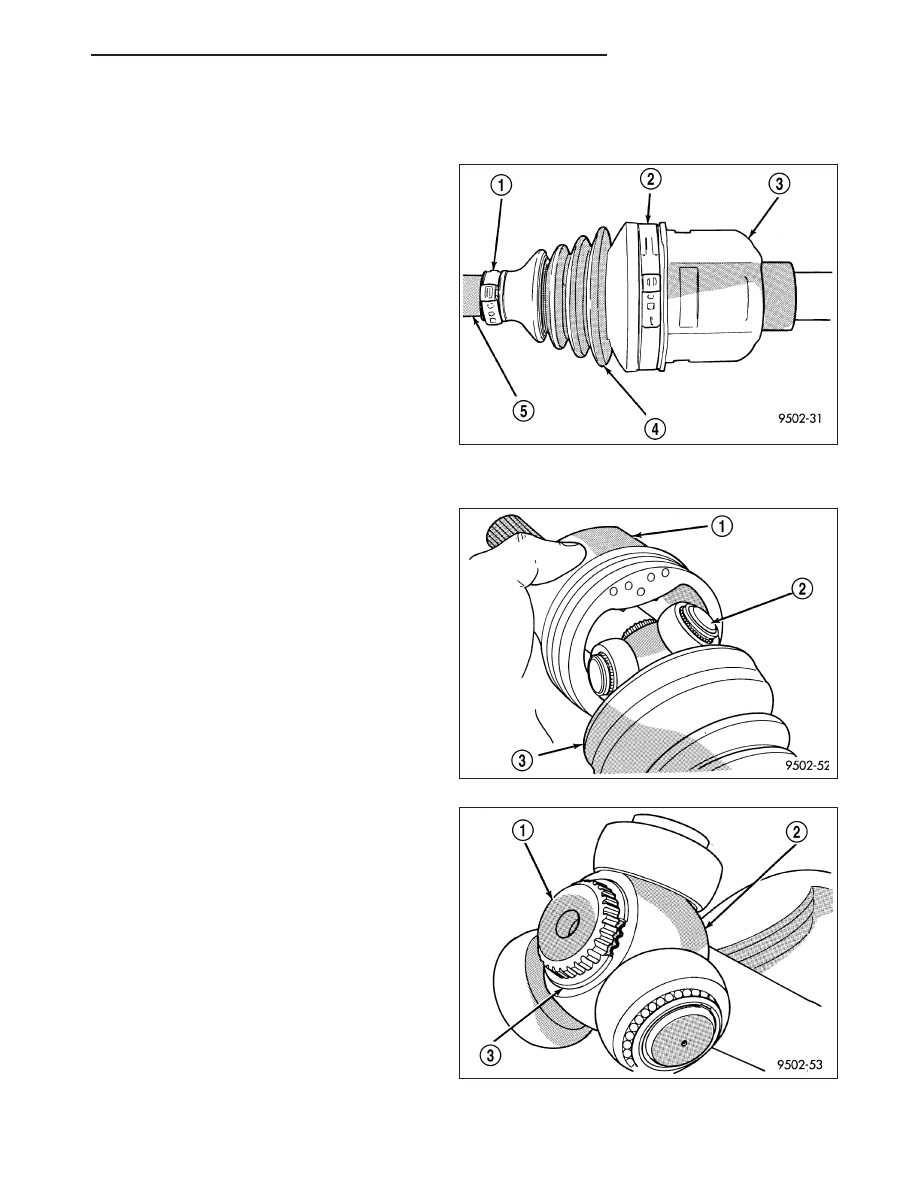Dodge Caliber. Manual - part 34

CV BOOT-INNER
REMOVAL
CAUTION: The inner tripod joints will use a retain-
ing clips inside the housing to keep the spider
assembly in the housing. Do not pull on the inter-
connecting shaft to disengage tripod housing from
transmission stub shaft. Removal in this manner
will cause damage to the inboard joint sealing
boots.
1. Remove the halfshaft requiring boot replacement
from the vehicle. (Refer to 3 - DIFFERENTIAL &
DRIVELINE/HALF SHAFT - REMOVAL)
2. Remove large boot clamp (2) that retains inner tri-
pod joint sealing boot to tripod joint housing (3) and
discard. Then remove small clamp (1) that retains
inner tripod joint sealing boot to interconnecting
shaft (5) and discard. Remove the sealing boot (4)
from the tripod housing and slide it down the inter-
connecting shaft.
CAUTION: When removing the spider joint from
the tripod joint housing, hold the rollers in place
on the spider trunions to prevent the rollers and
needle bearings from falling away.
3. Slide the interconnecting shaft and spider assembly
(2) out of the tripod joint housing (1).
4. Remove snap ring (3) that retains spider assembly
(2) to interconnecting shaft (1).
PM
HALF SHAFT-FRONT
3 - 11